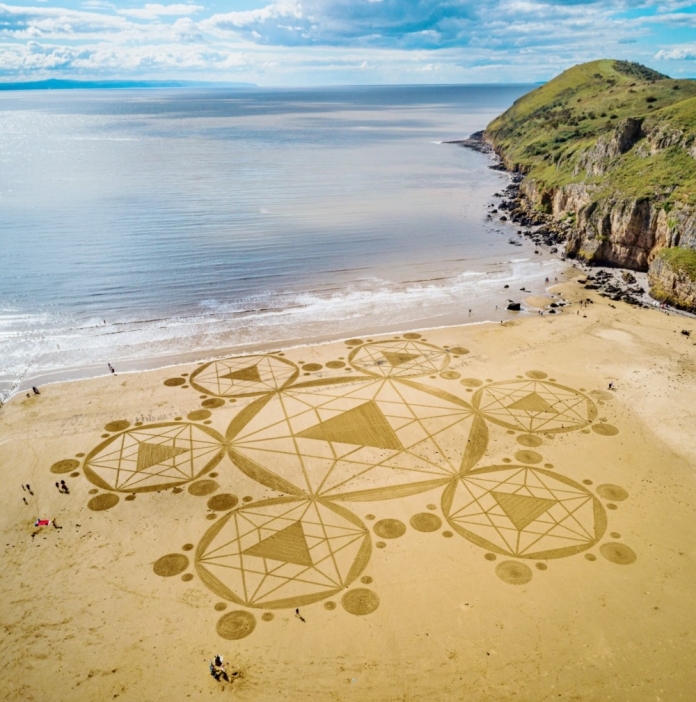Sand artist Julian Richardson has created this incredible 134-metre wide design on the beach next to Brean Down.
The huge design was created on the sands over the course of six hours between the high tides by Julian, Paul Burton, Khi Deva, Mirka Stadtruckerova and Stuart Dike.
Julian told Burnham-On-Sea.com: “Once I’d located a suitable centre-point, the central pattern was first created by marking out a ring and dividing its perimeter into six.”
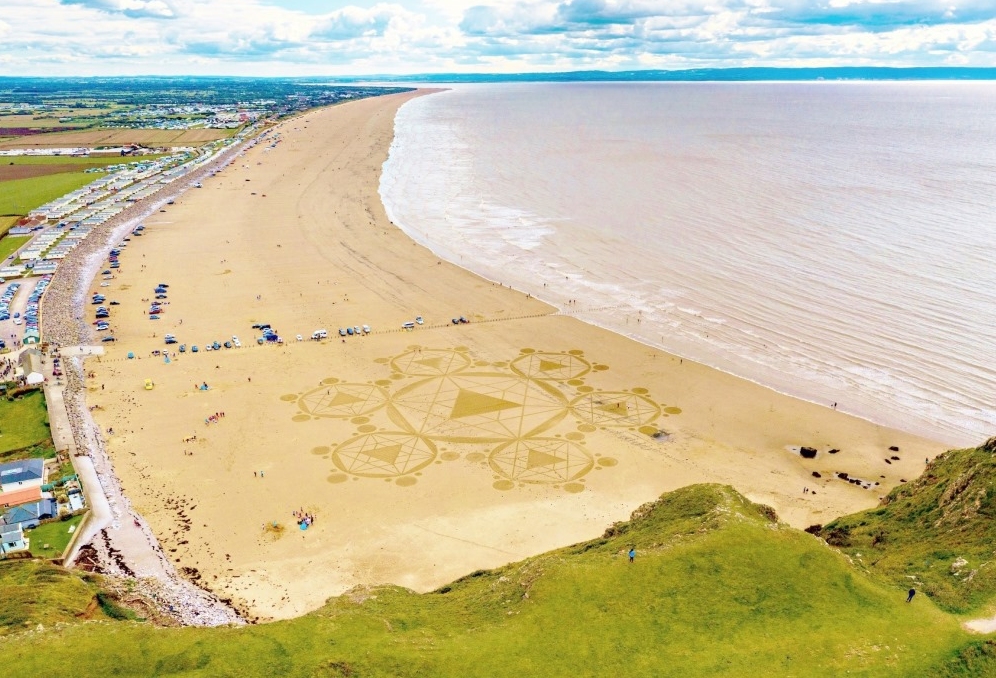
“These points where subsequently linked together to create the design which is a stylised version of a icosahedron, a three-dimensional polyhedron with 20 faces. By repeating the pattern a further six times, the overall artwork ended up covering an area of 134m/439ft.”
He adds: “Inspired by the op art movement and artists such as M.C.Escher, I am initially a self-taught graphic artist, producing hand drawn geometric pieces.”
“My artistic inspiration comes from a variety of sources – from viewing logos and symbols, to studying the geometric order contained within nature, coupled with numerous hours spent on my drawing designing geometric patterns.”
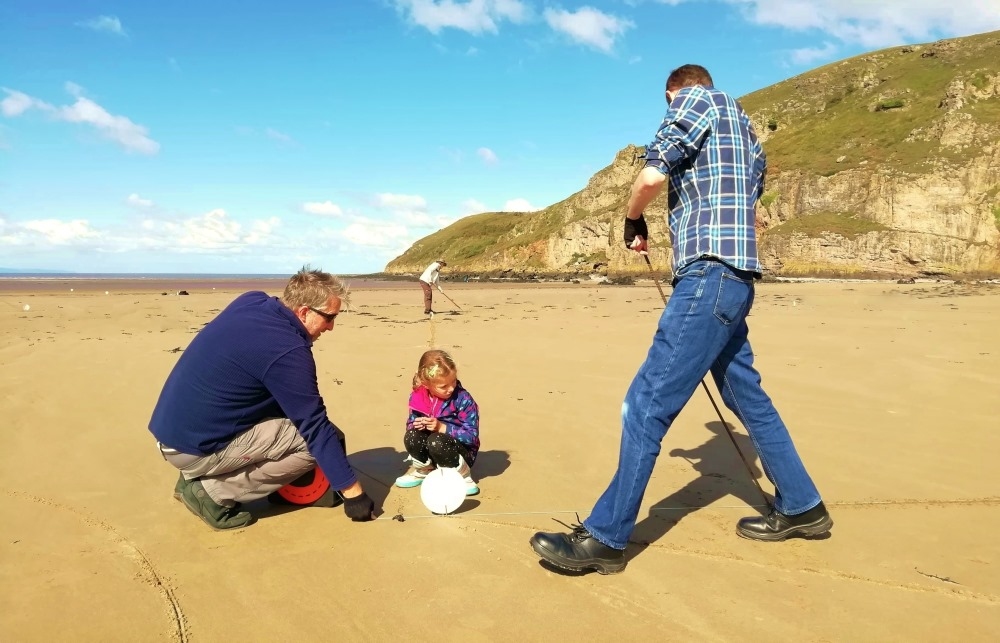
“Due to tidal conditions, the sand arts transient nature is very ‘of the moment’ – a metaphor for time itself perhaps? Each piece can only be fully appreciated when viewed from overhead.”
“At ground level, the art appears more abstract in appearance. I usually practice my sand art below Brean Down. This exposes a wide expanse of beach during low tide, perfect for my art which can measure up to 500ft in diameter.”
“Each piece of art is the final process of a design concept that has been carefully considered in advance. By following a detailed plan, my team and I are able to survey the beach using equipment such as surveyors tapes, string, and marker posts, to accurately plot points which can either be utilised as centre-points, or linked together in a specific order using a fine-tipped rod to create the initial outline of each artwork.”
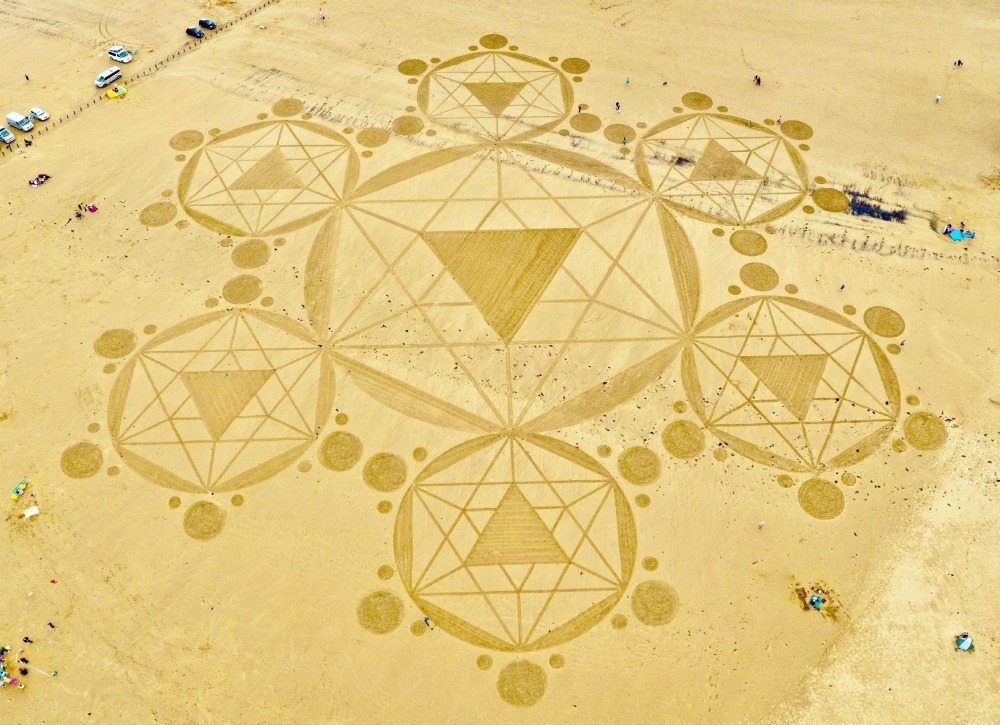
“My tool of choice is an adjustable wire headed leaf rake which I use to scratch the surface of the sand. This exposes the wetter subsurface, thus providing the contrast for the art to become visible.”
“I only have a six-hour window in which to create and record each piece of sand art before the incoming tide erases it.”
“I enjoy working with nature and overcoming any difficulties this presents. On the odd occasion I’ve had to alter a design due to the beach being slow to dry out, or have had to amend a piece in order to complete it to a sufficient stage and document the art before the incoming tide engulfs it, but in the most part, half the fun is the challenge of attempting to achieve the seemingly impossible!”
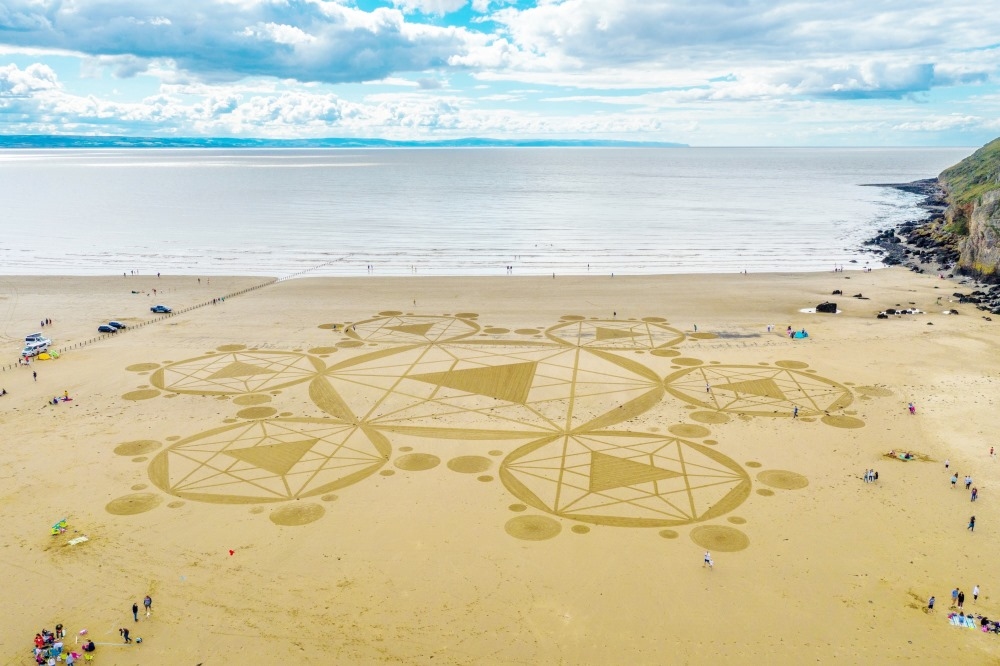
“Knowing the fleeting patterns that I leave behind in some way act as catalysts to amaze, inspire, or empower others makes it all worthwhile.”
“I’d advise anyone to give it a try the next time they visit a beach.” The two ground photos were taken by Mirka and the other images were taken by Nick Bull of Stonehenge Dronescapes.

